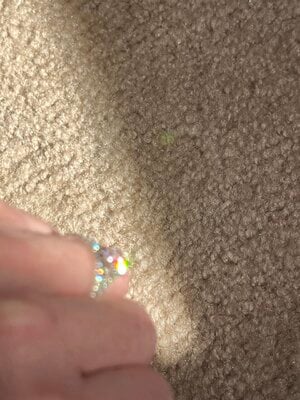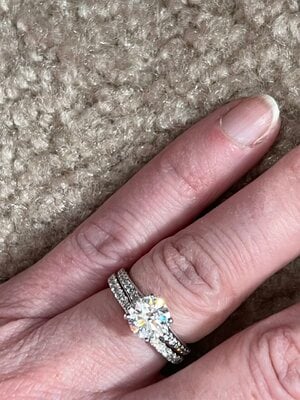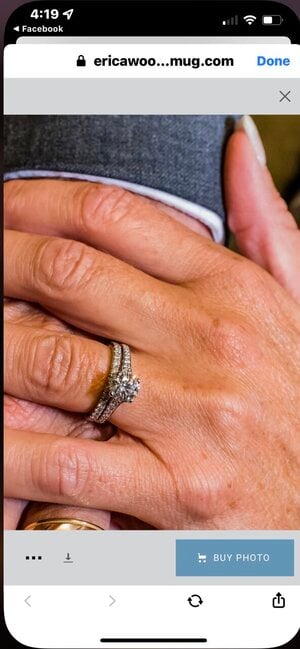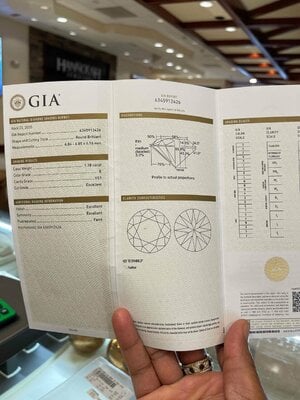Hello,
I have been reading from this site for almost a year now (just created a member ID a little while back). I have been trying to take pictures (ASET & Idealscope) of a mounted ring for some input on the diamond. This has been difficult so I have attached the pictures I was able to get - even though I know they are not picture perfect. Light is coming from behind on all pictures and they have varying intensity of light. I have assumed that the brighter the back light the better...although I have no idea.
I have experimented quite a bit and I am unsure if there is too much light in these pictures from the back side? Can you still see the needed details to get an idea if there is any leakage or issues with this stone from the pictures I have attached?
I am looking for some feedback on the stone. Anyone see any leakage concerns or anything else to be concerned with given the images?
HCA says 1.6 to 1.8 depending on if it is hearts and arrows or not. This is a ring.
GIA triple excellent.
AJA / NAJA says overall cut score of 1A and the cut parameters from HCA show GIA XXX and AGS ideal.
From the GIA cert -
34.5 crown
41.0 pavilion
43.5 pavilion depth
58 table
14.5 crown height
60.8 overall depth
50 star length
80% lower half
I realize the GIA numbers are not as exact as AGS so I am looking for some opinions from PriceScope members as to if there is anything to worry about with this stone. I also ran GIA FacetWare and it came up with some slightly different numbers.
Any help with image evaluation is appreciated!
With all of that said - anything to be concerned with from the pictures?
I have been reading from this site for almost a year now (just created a member ID a little while back). I have been trying to take pictures (ASET & Idealscope) of a mounted ring for some input on the diamond. This has been difficult so I have attached the pictures I was able to get - even though I know they are not picture perfect. Light is coming from behind on all pictures and they have varying intensity of light. I have assumed that the brighter the back light the better...although I have no idea.
I have experimented quite a bit and I am unsure if there is too much light in these pictures from the back side? Can you still see the needed details to get an idea if there is any leakage or issues with this stone from the pictures I have attached?
I am looking for some feedback on the stone. Anyone see any leakage concerns or anything else to be concerned with given the images?
HCA says 1.6 to 1.8 depending on if it is hearts and arrows or not. This is a ring.
GIA triple excellent.
AJA / NAJA says overall cut score of 1A and the cut parameters from HCA show GIA XXX and AGS ideal.
From the GIA cert -
34.5 crown
41.0 pavilion
43.5 pavilion depth
58 table
14.5 crown height
60.8 overall depth
50 star length
80% lower half
I realize the GIA numbers are not as exact as AGS so I am looking for some opinions from PriceScope members as to if there is anything to worry about with this stone. I also ran GIA FacetWare and it came up with some slightly different numbers.
Any help with image evaluation is appreciated!
With all of that said - anything to be concerned with from the pictures?












300x240.png)